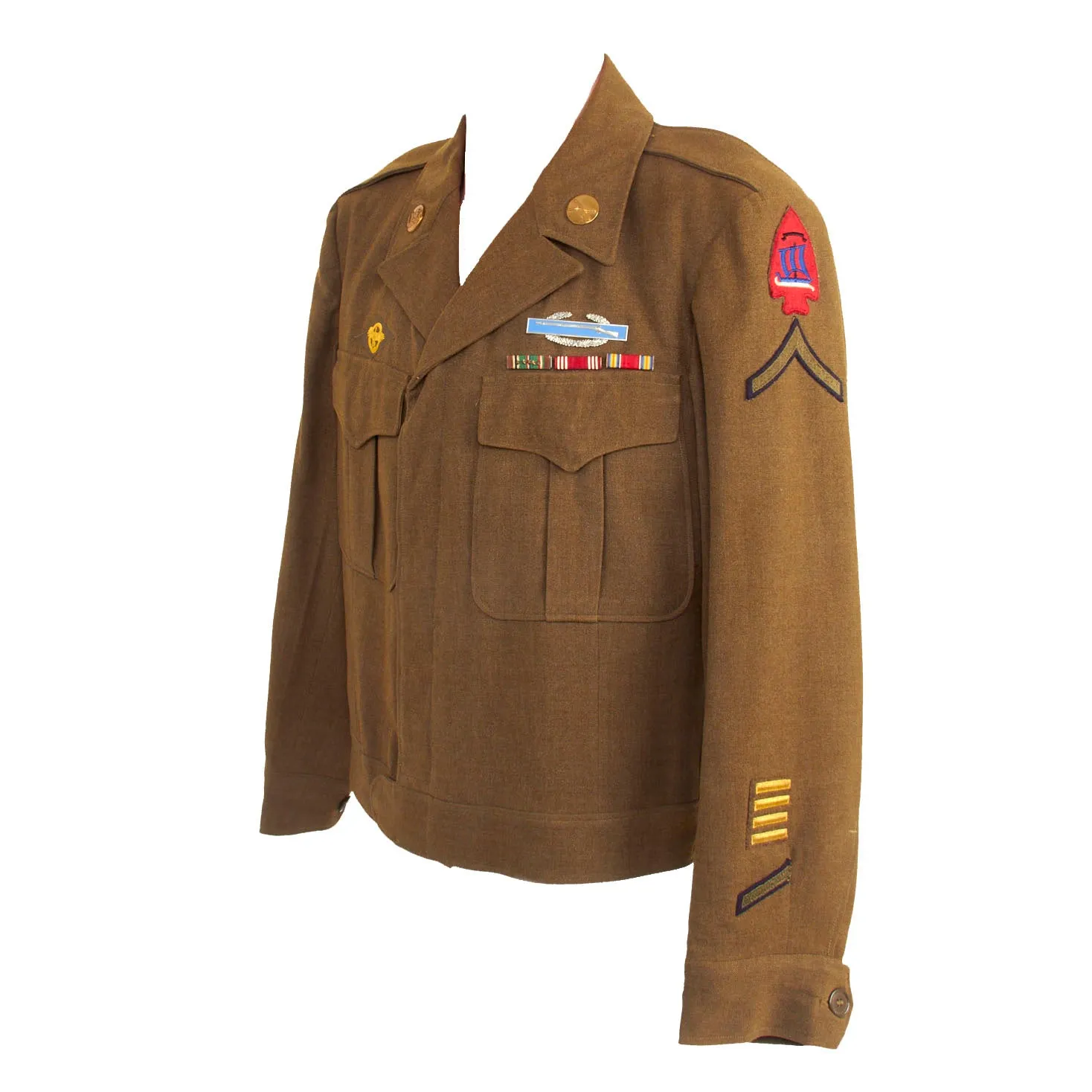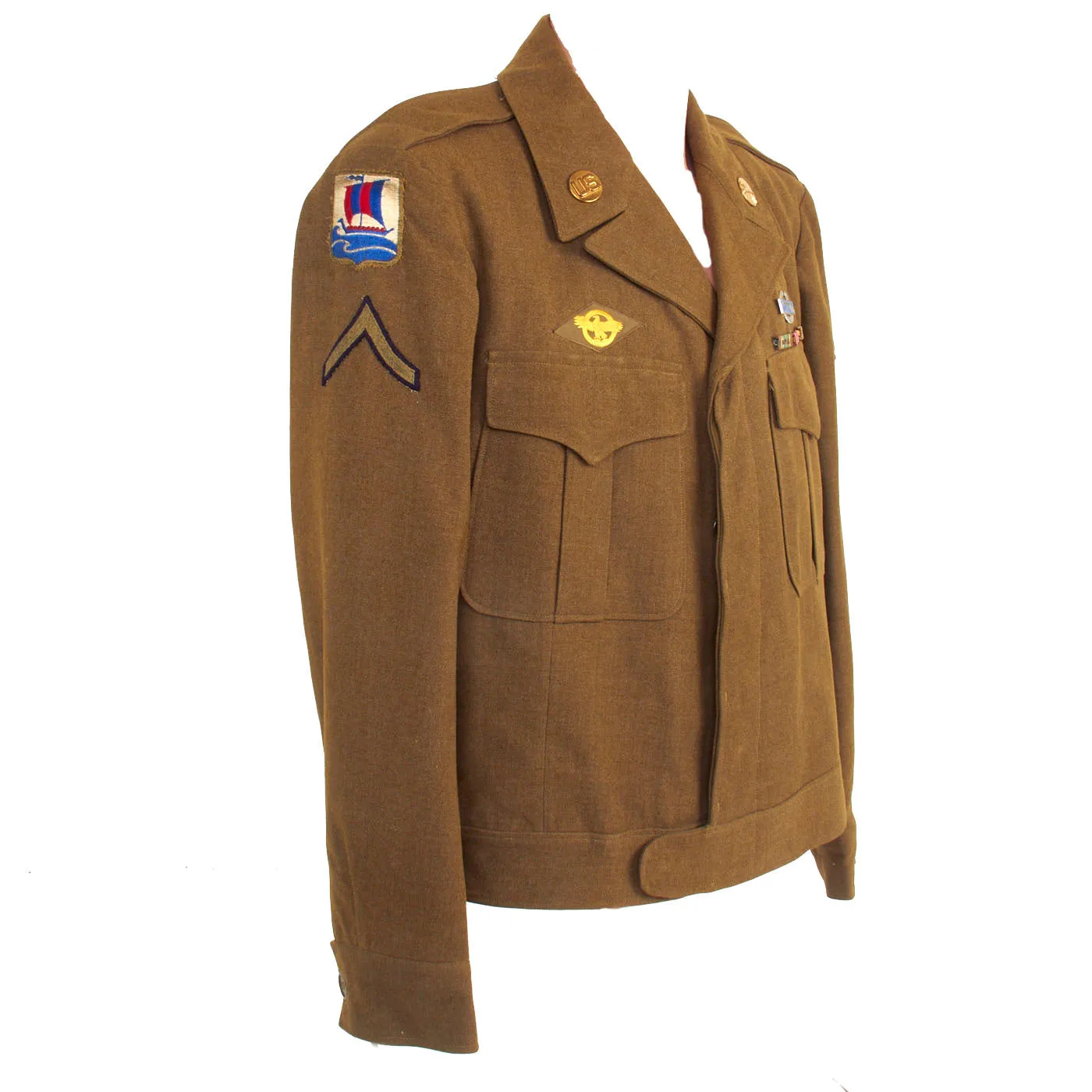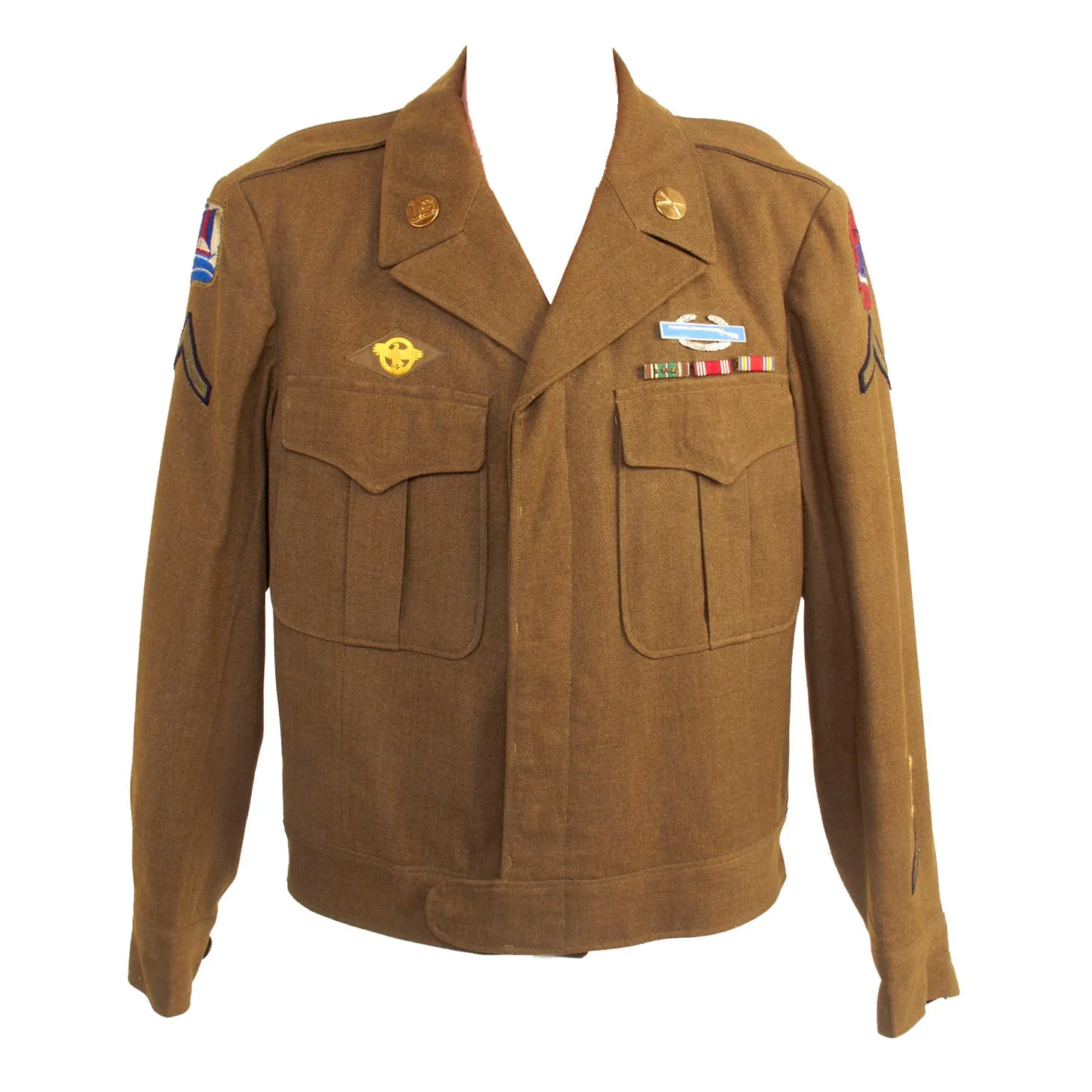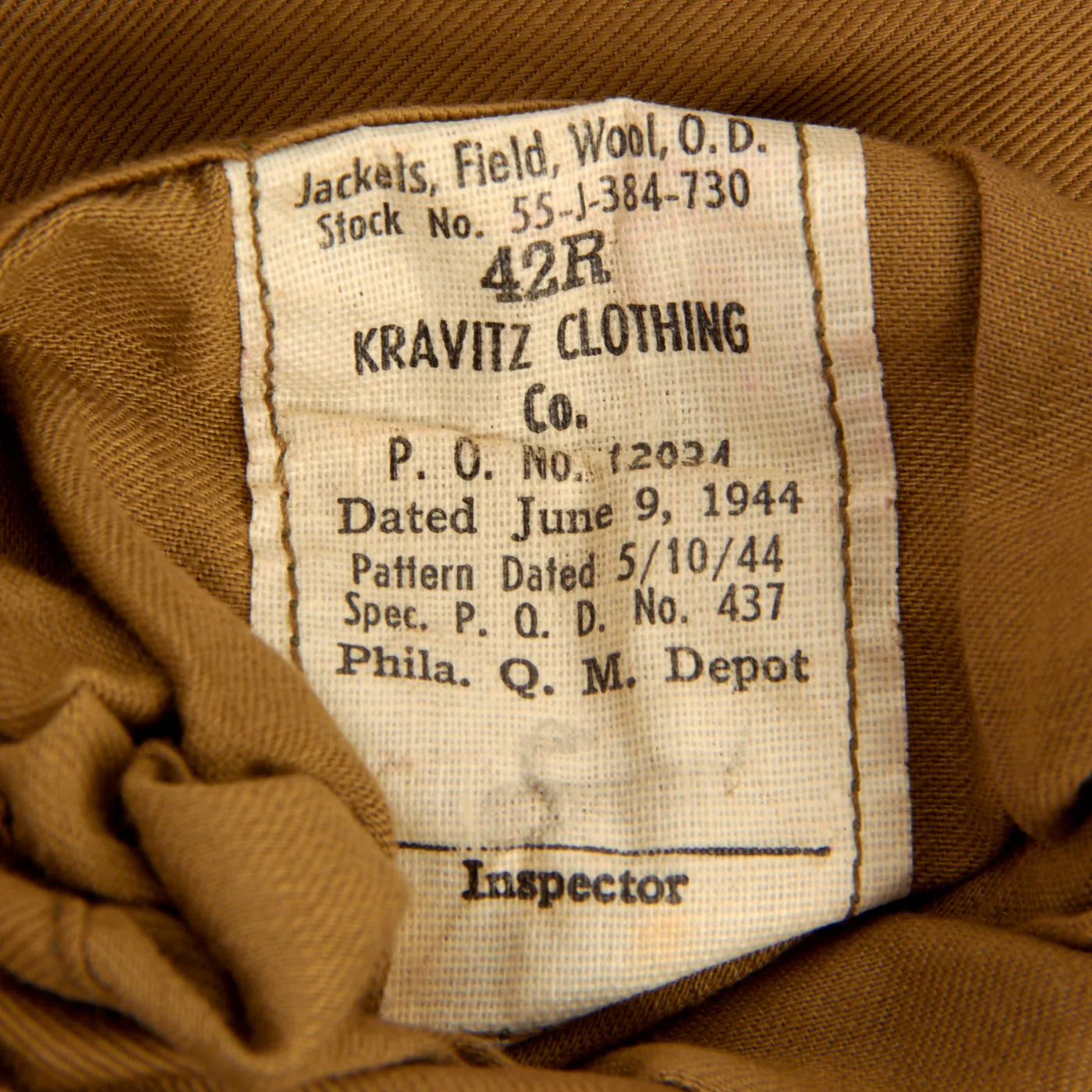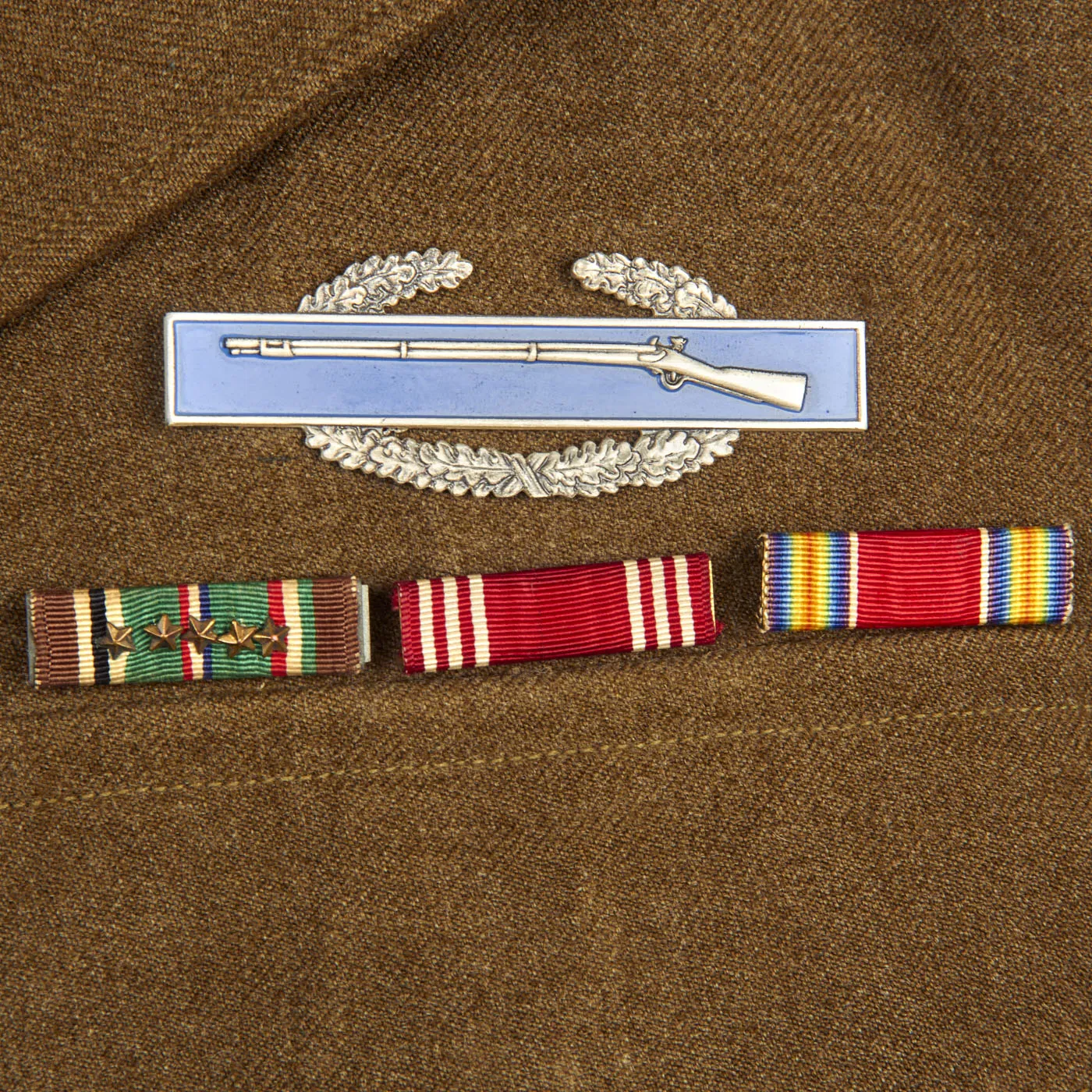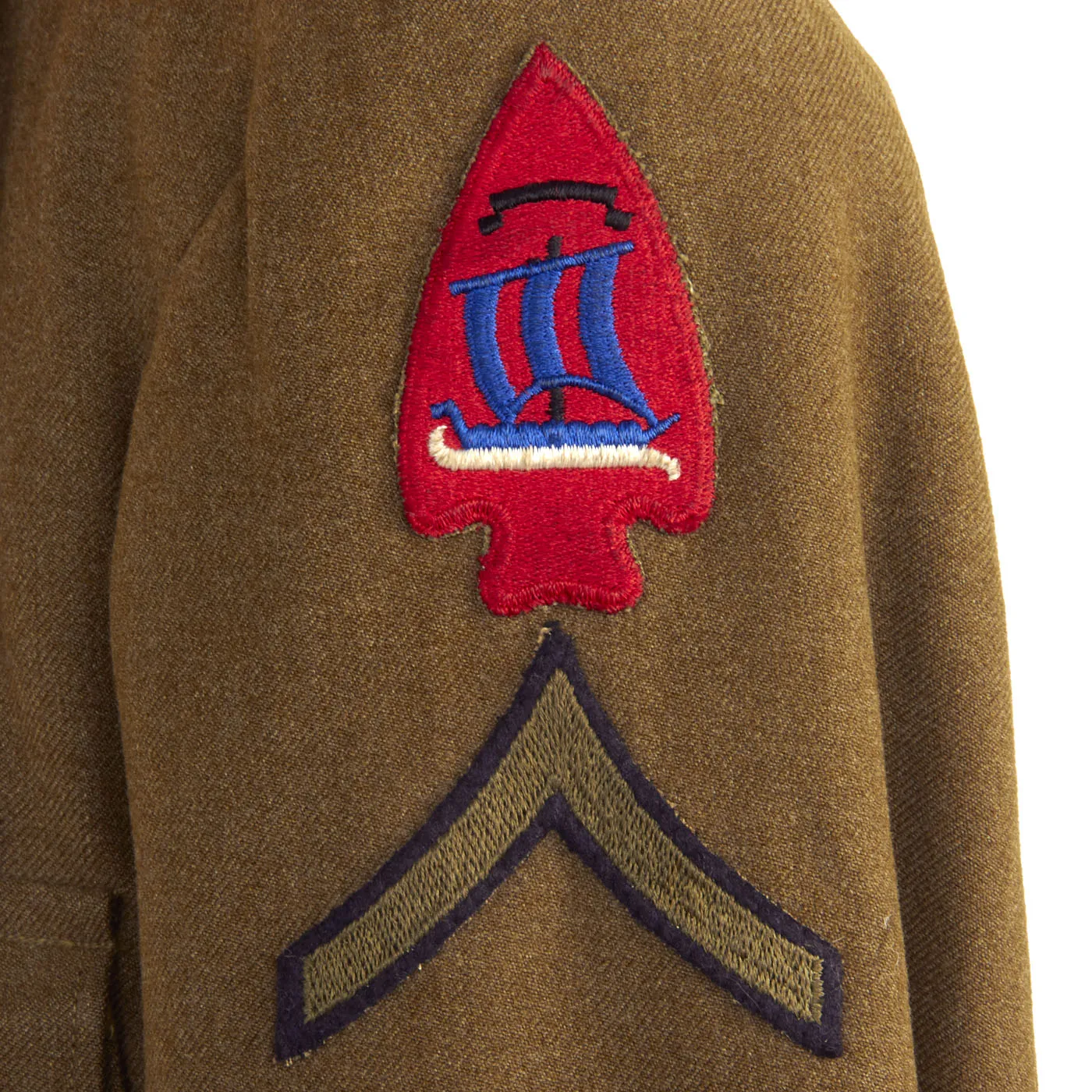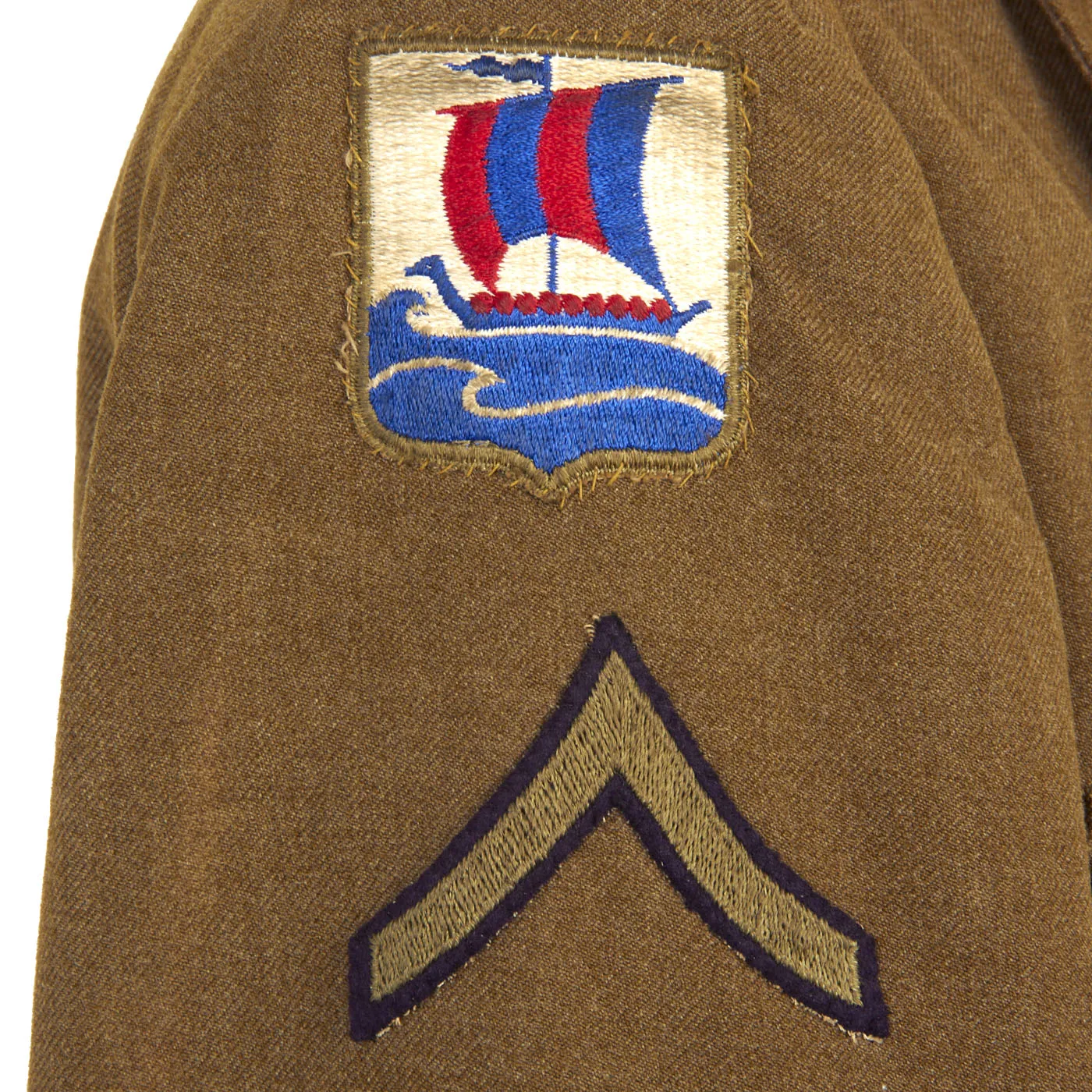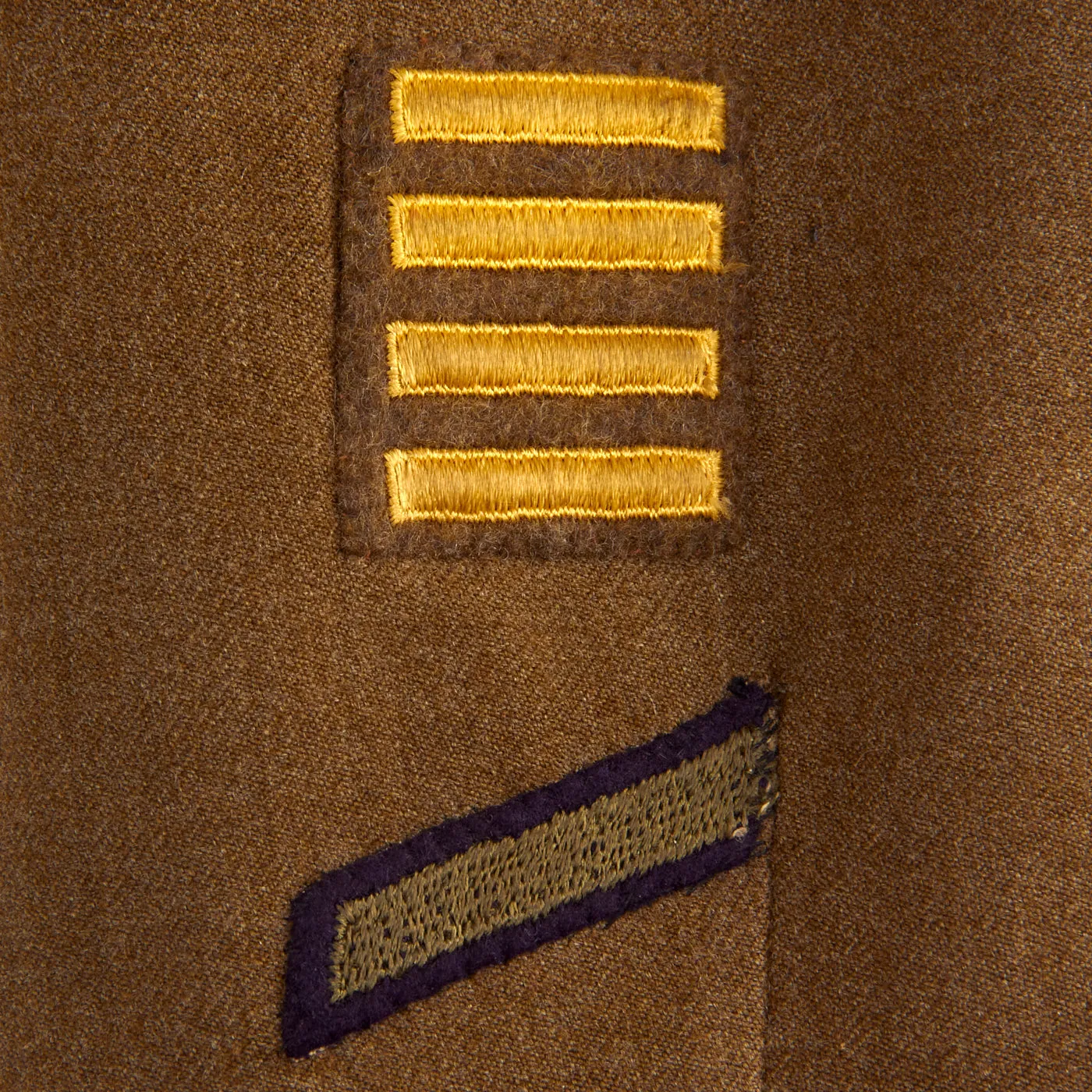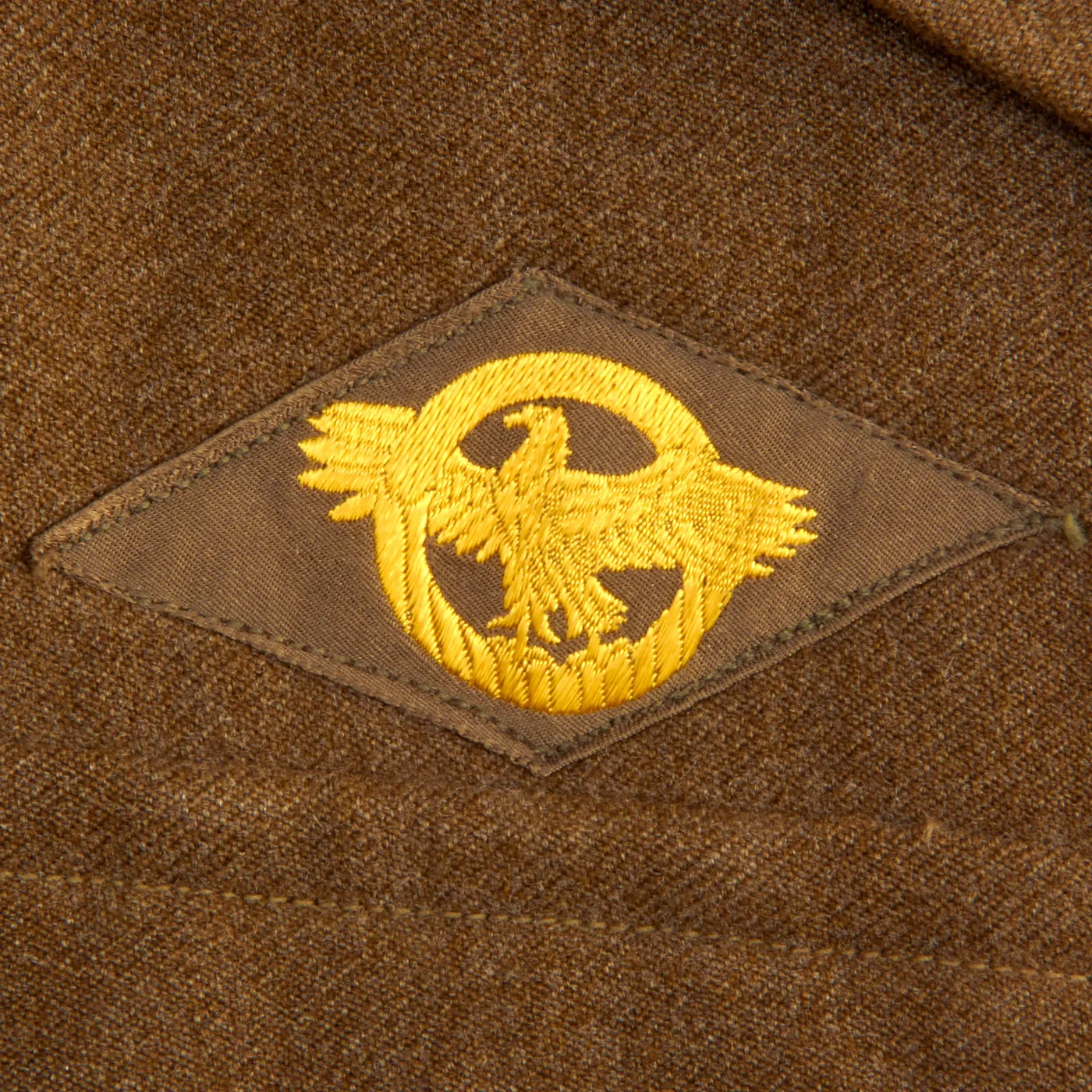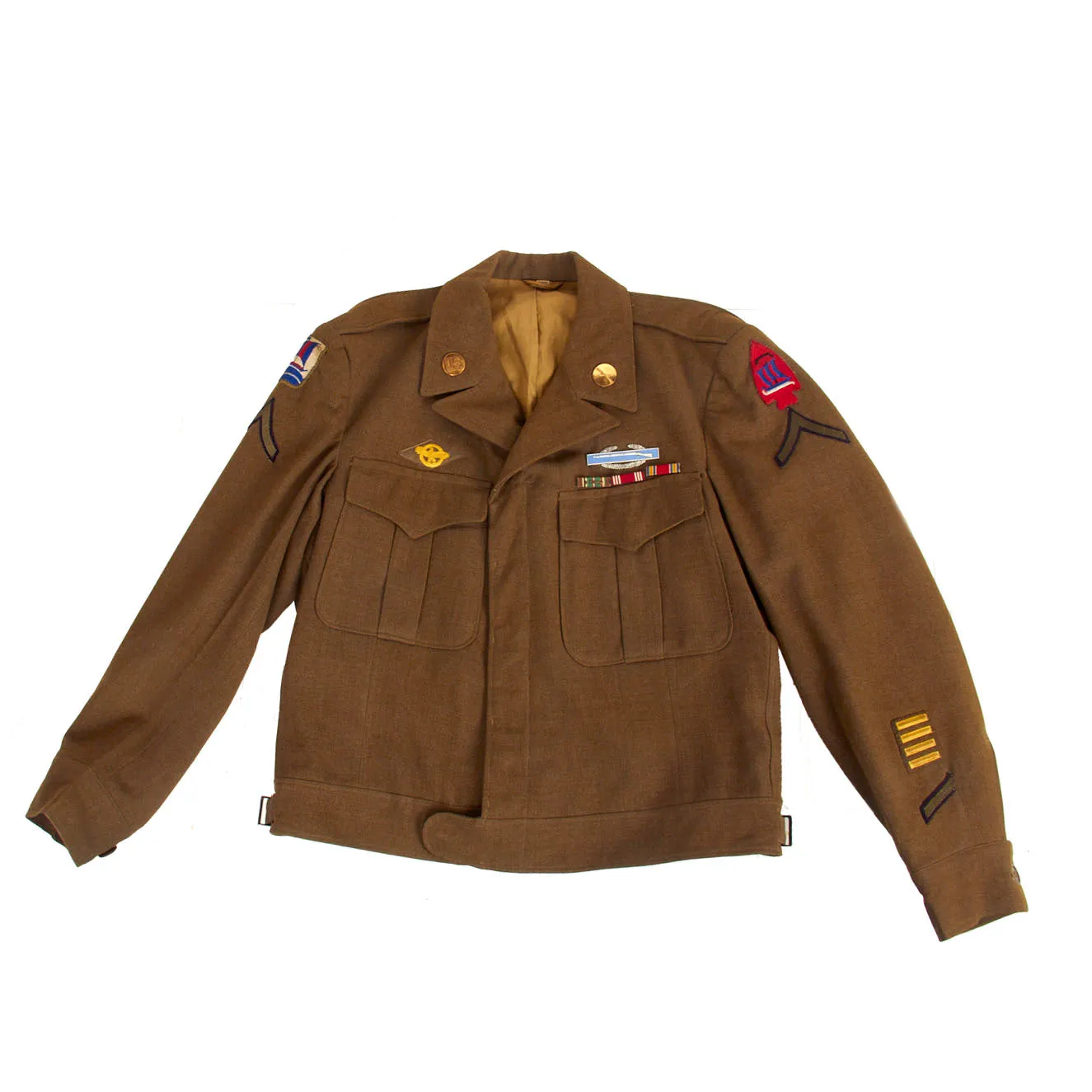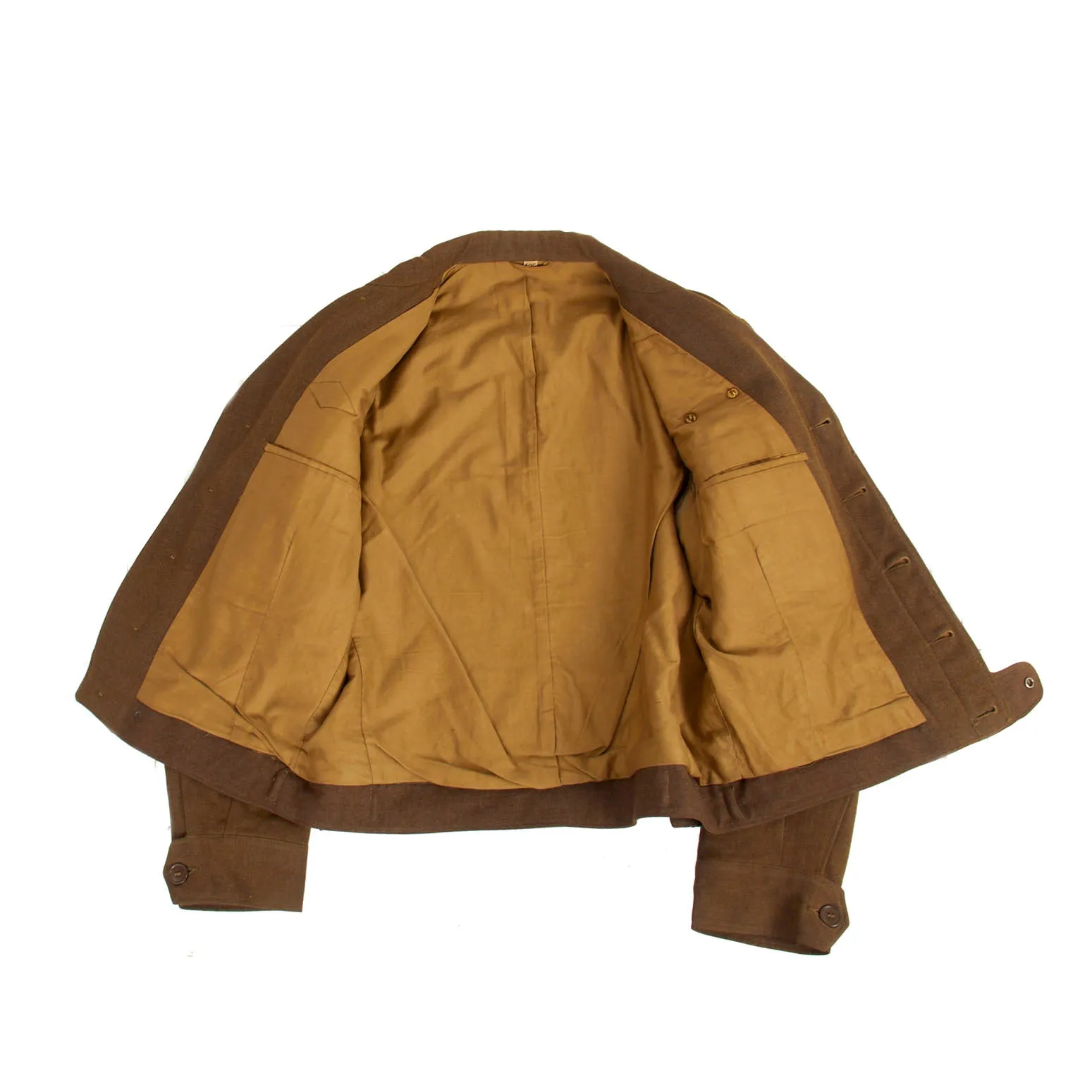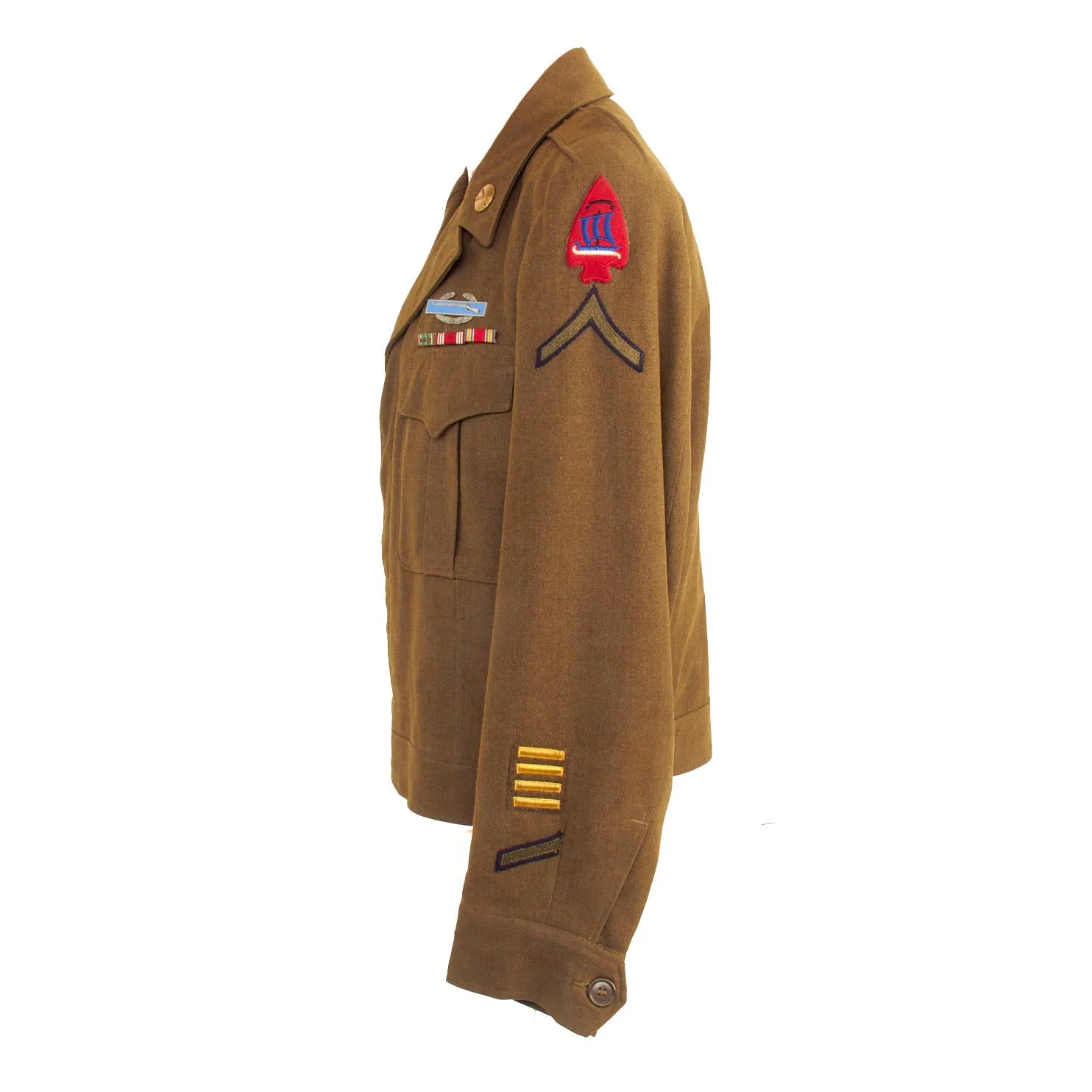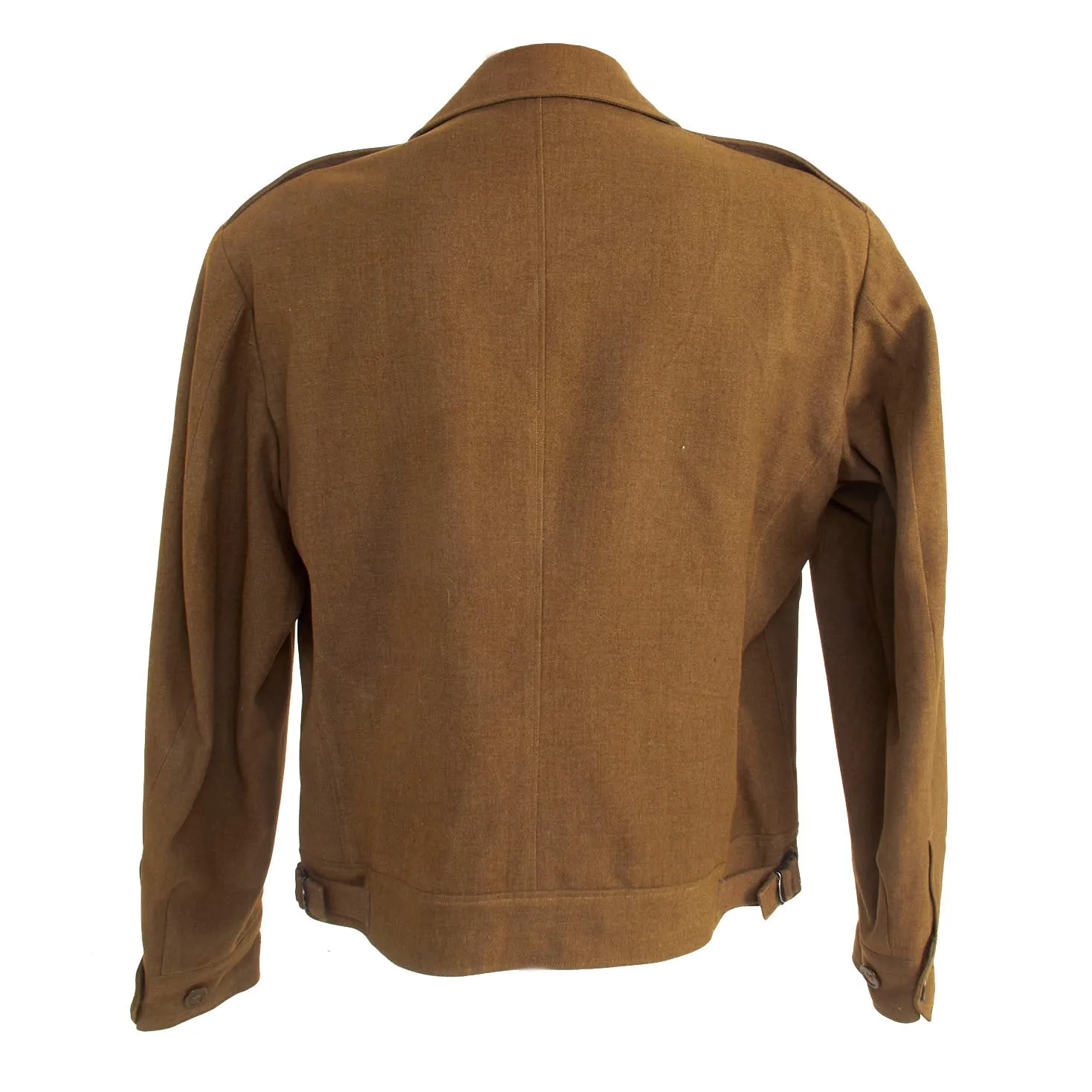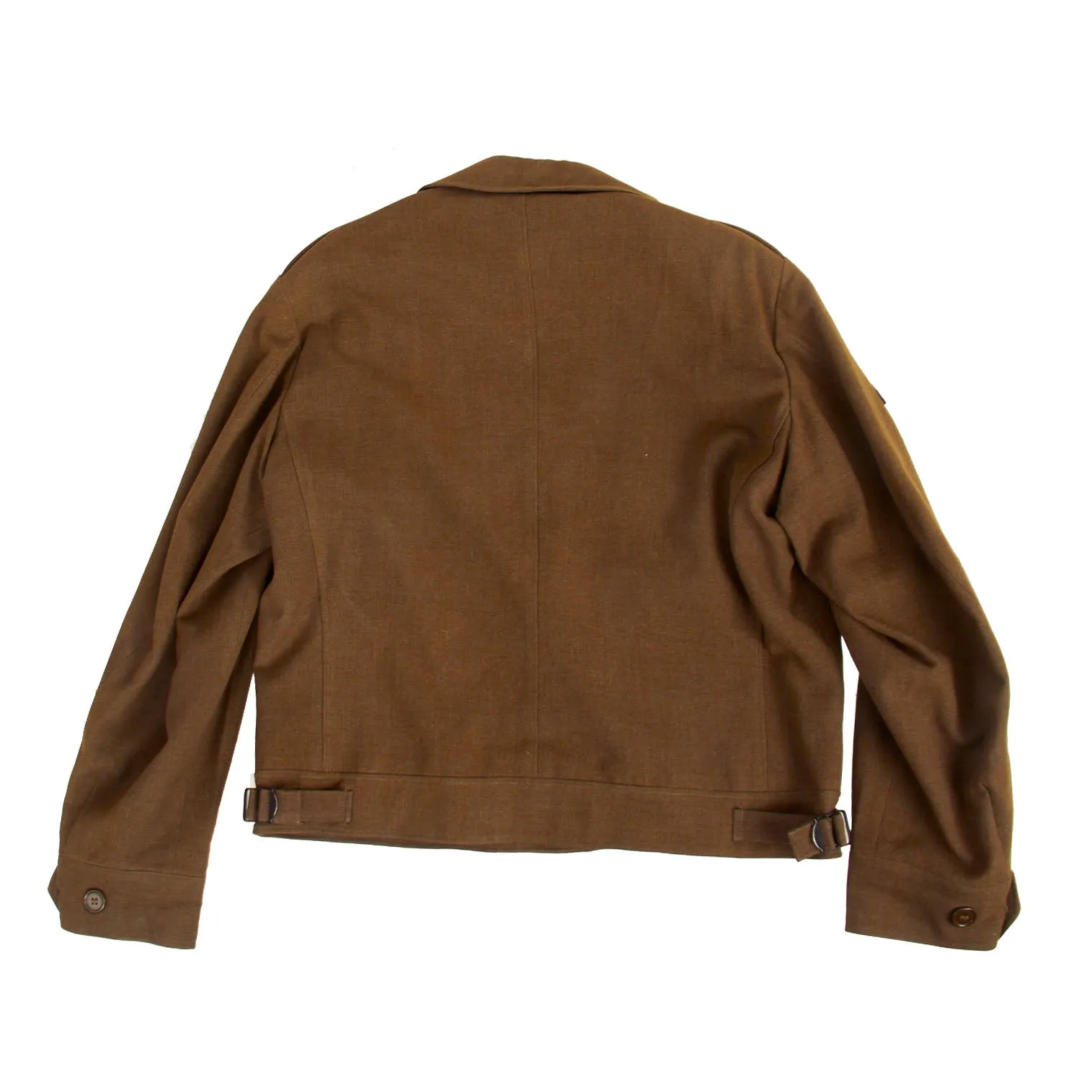Original Item: Only One Available. The Eisenhower jacket or "Ike" jacket, officially known as the Jacket, Field, Wool, Olive Drab, is a type of waist-length jacket developed for the U.S. Army during the later stages of World War II and named after Dwight D. Eisenhower. Intended to be worn on its own or as an insulating layer beneath the M-1943 Field Jacket and over the standard wool flannel shirt and wool sweater, it featured a pleated back, adjustable waist band, fly-front buttons, bellows chest pockets, slash side pockets, and shoulder straps.
This lovely Ike jacket features a 474th Infantry Regiment patch on the left shoulder and a 99th Infantry Battalion patch on the right shoulder. It was a popular practice to display your former unit on your right shoulder while wearing your current unit on the left. It was often a sign that you served overseas or in combat with that unit and you wanted to proudly display that on your uniform, a tradition still carried on today by the US Army. Soldiers who are combat veterans are authorized to permanently wear the patch of the unit they served with on their right shoulder.
The uniform is in excellent condition and shows signs of moderate wear. The lower left sleeve shows 4 overseas bars for 2 years of service while overseas. Below the overseas bars is a single service stripe. Below the unit patches is a single PFC chevron. All patches are in lovely condition with minimal age toning and no noticeable damage to them.
The left side just above the breast pocket features (3) loose pin back ribbons in an incorrect order but we left them how they were. The ribbons are the EAME medal with 5 battle stars (which is correct for the 99th), Good Conduct and a WWII Victory. Above the ribbons is a lovely Combat Infantryman Badge which is awarded for participation in ground combat. The left side of the jacket displays a lovely “Ruptured Duck” patch in the correct colors. The collar discs are the “US” on the right side with the infantry crossed rifles on the left.
This is truly a lovely example of a “Vikings” Ike jacket that comes more than ready to display!
Measurements:
Collar to shoulder: 10”
Shoulder to sleeve: 25.5”
Shoulder to shoulder: 20”
Chest width: 22”
Waist width: 20”
Hip width: 20”
Front length: 29"
99th Infantry Battalion
The 99th Infantry Battalion (separate) was a battalion of Norwegian-speaking soldiers in the US Army. Created in July 1942 at Camp Ripley, Minnesota, the battalion originally consisted of 1,001 soldiers. The battalion was attached to the First Army; however, it was labeled "Separate" because it was not attached to a specific regiment.
After the attack on Pearl Harbor, the War Department considered how the military could use foreigners and bilingual, first-generation immigrants from German-occupied areas to assist the war effort. The initial assessment concluded that it would be "un-American" to train foreign troops on US soil, prompting the Norwegian government to refuse a request to recruit Norwegians in the United States for military training in Canada. After a time, however, the War Department decided to set up special units of US citizens from certain ethnic groups for operations in countries occupied by the Axis powers.
The following five battalions, established in 1942, were organized based on ethnic groups:
1st Filipino Infantry Battalion: Filipino (the nucleus of later 1st and 2nd Filipino infantry regiments)
99th Infantry Battalion (separate): Norwegian
100th Infantry Battalion (separate): Japanese
101st Infantry Battalion (separate): Austrian (dissolved in 1943 before active service)
122nd Infantry Battalion (separate): Greek
A Polish unit was also proposed, but never created.
In Norwegian historiography, the men of the 99th Infantry Battalion are often referred to as "Norwegian-Americans." This is only partially correct; the original intention was to transfer as many voluntary "Norwegian nationals" who had begun the immigration process (a condition of enlistment) to the unit from existing armies as could be acquired. In her book, The 99th Battalion, the Norwegian novelist Gerd Nyquist estimates that first-generation Norwegian immigrants may have constituted 50 percent of the original force – about 500 men. One of Nyquist's sources from the battalion said 40 percent of the battalion had been Norwegian citizens (around 400 soldiers). This figure was the result of an informal survey conducted by Nyquist; however, the survey was limited to 152 respondents. Based on information from a veteran of the battalion, Max Hermansen argues in his book D-dagen 1944 og norsk innsats that there were approximately 300 Norwegians in the battalion.
The 99th Infantry Battalion landed on Omaha Beach on the evening of June 22, 1944, and then took part in the final battle for Cherbourg. As a "separate" battalion, it belonged to no regiment, but was attached to different formations as needed. From September, the battalion operated in Belgium. During Christmas 1944, the battalion was involved in the Battle of the Bulge.
The battalion participated in the following campaigns:
Normandy: June 22, 1944 – July 24, 1944
Northern France: June 25, 1944 – September 14, 1944
Rhineland (Würzlen–Aachen): September 15, 1944 – December 16, 1944
Ardennes–Alsace: December 17, 1944 – January 18, 1945
Central Europe: April 4, 1945 – May 11, 1945
The 99th Infantry Battalion spent 101 days in combat. The casualties suffered were 52 killed in combat, 207 wounded and six missing in action. These 207 men were wounded multiple times, several five times, thus the 207 received 305 Purple Hearts.
474th Regiment
On January 19, 1945, the 99th Infantry Battalion joined the 474th Infantry Regiment in Child-sur-Mer. The regiment was recently formed, partly to prepare for a possible invasion of Norway in the event of a partial German withdrawal from Norway. At this point, the German forces in Norway evacuated and burned Finnmark, and retreated behind the Lyngen Line. A scenario where the Germans had to retreat south of Dovre, making it possible to establish the Norwegian government in Trondheim, seemed likely.
On April 2, the regiment moved to Aachen, in Germany. The 99th Infantry Battalion's tasks consisted mainly of patrolling and the suppression of pockets of continued German resistance until May 11.
Between April 15–18, 1945, the 474th Infantry Regiment, including the 99th Infantry Battalion, was responsible for the transportation of NSDAP treasures found at the Merkers mine. The convoy, named "Task Force Hansen," transported 3,762 bags of currency, 8,307 gold bars, 3,326 bags of gold coins, and numerous bags of silver, platinum, jewelry and art treasures to a safe place in the Frankfurt area.




